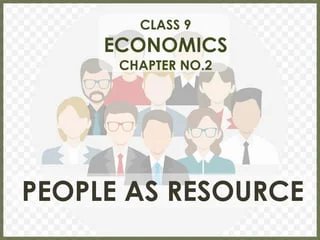Collection, Organisation and Presentation of Data - Class 11
Collection, Organization, and Presentation of Data (Class 11) Data collection is the process of gathering information relevant to a specific research question or problem. It involves identifying the sources of data, designing appropriate methods for data collection, and actually collecting the data. Data organization is the process of arranging and structuring data in a meaningful way. This involves classifying data, creating categories, and organizing data into tables, charts, or other visual representations. Data presentation is the process of communicating data effectively to others. It involves selecting appropriate methods for presenting data, such as tables, charts, graphs, or maps, and designing visuals that are clear, concise, and visually appealing. Key Concepts: Primary data: Data collected directly from the source. Secondary data: Data collected by someone else. Census: A complete enumeration of a population. Sample: A subset of a population. Sampling methods: Techniques for selecting a sample from a population, such as random sampling, stratified sampling, and cluster sampling. Frequency distribution: A table showing the frequency of occurrence of different values or categories in a dataset. Bar chart: A chart with rectangular bars representing the frequencies of different categories. Histogram: A bar chart with adjacent bars representing the frequencies of continuous data. Line graph: A graph showing the trend of a variable over time. Pie chart: A chart showing the relative proportions of different categories as slices of a pie. Importance of Data Collection, Organization, and Presentation: Decision making: Accurate and well-organized data is essential for making informed decisions. Problem-solving: By analyzing data, we can identify problems and develop solutions. Research: Data collection, organization, and presentation are fundamental to conducting research and drawing meaningful conclusions. Communication: Effective data presentation helps communicate findings clearly and persuasively. In Class 11, students will learn the basics of data collection, organization, and presentation. They will practice collecting data using different methods, organizing data into tables and charts, and presenting data in a clear and visually appealing manner. This knowledge will be essential for understanding and analyzing data in various fields, including economics, statistics, and social sciences. তথ্য সংগ্রহ, সংগঠন এবং উপস্থাপনা (Class 11) তথ্য সংগ্রহ হল একটি নির্দিষ্ট গবেষণা প্রশ্ন বা সমস্যার সাথে প্রাসঙ্গিক তথ্য সংগ্রহের প্রক্রিয়া। এর মধ্যে রয়েছে তথ্যের উৎস চিহ্নিত করা, তথ্য সংগ্রহের জন্য উপযুক্ত পদ্ধতি তৈরি করা এবং প্রকৃতপক্ষে তথ্য সংগ্রহ করা। তথ্য সংগঠন হল একটি অর্থপূর্ণ উপায়ে তথ্য সাজানো এবং গঠন করার প্রক্রিয়া। এর মধ্যে রয়েছে তথ্য শ্রেণীবদ্ধ করা, বিভাগ তৈরি করা এবং তথ্যকে টেবিল, চার্ট বা অন্যান্য চাক্ষুষ উপস্থাপনায় সংগঠিত করা। তথ্য উপস্থাপনা হল অন্যদের কাছে কার্যকরভাবে তথ্য যোগাযোগ করার প্রক্রিয়া। এর মধ্যে রয়েছে তথ্য উপস্থাপনের জন্য উপযুক্ত পদ্ধতি নির্বাচন করা, যেমন টেবিল, চার্ট, গ্রাফ বা মানচিত্র এবং স্পষ্ট, সংক্ষিপ্ত এবং দৃশ্যত আকর্ষণীয় ভিজ্যুয়াল ডিজাইন করা। মূল ধারণাগুলিঃ প্রাথমিক তথ্যঃ সরাসরি উৎস থেকে সংগৃহীত তথ্য। গৌণ তথ্যঃ অন্য কারও দ্বারা সংগৃহীত তথ্য। জনগণনাঃ একটি জনসংখ্যার সম্পূর্ণ গণনা। নমুনাঃ একটি জনসংখ্যার উপসেট। স্যাম্পলিং পদ্ধতিঃ একটি জনসংখ্যা থেকে একটি নমুনা নির্বাচন করার কৌশল, যেমন র্যান্ডম স্যাম্পলিং, স্তরীকৃত স্যাম্পলিং এবং ক্লাস্টার স্যাম্পলিং। ফ্রিকোয়েন্সি ডিস্ট্রিবিউশনঃ একটি ডেটাসেটে বিভিন্ন মান বা বিভাগের ঘটনার ফ্রিকোয়েন্সি দেখানো একটি টেবিল। বার চার্টঃ আয়তক্ষেত্রাকার বার সহ একটি চার্ট যা বিভিন্ন বিভাগের ফ্রিকোয়েন্সি উপস্থাপন করে। হিস্টোগ্রামঃ অবিচ্ছিন্ন তথ্যের ফ্রিকোয়েন্সি প্রতিনিধিত্বকারী সংলগ্ন বার সহ একটি বার চার্ট। লাইন গ্রাফঃ সময়ের সাথে সাথে একটি পরিবর্তনশীলের প্রবণতা দেখানো একটি গ্রাফ। পাই চার্টঃ পাইয়ের টুকরো হিসাবে বিভিন্ন বিভাগের আপেক্ষিক অনুপাত দেখানো একটি চার্ট। তথ্য সংগ্রহ, সংগঠন এবং উপস্থাপনার গুরুত্বঃ সিদ্ধান্ত গ্রহণঃ অবহিত সিদ্ধান্ত গ্রহণের জন্য সঠিক এবং সুসংগঠিত তথ্য অপরিহার্য। সমস্যা সমাধানঃ তথ্য বিশ্লেষণ করে আমরা সমস্যাগুলি সনাক্ত করতে এবং সমাধানগুলি বিকাশ করতে পারি। গবেষণাঃ তথ্য সংগ্রহ, সংগঠন এবং উপস্থাপনা গবেষণা পরিচালনা এবং অর্থপূর্ণ সিদ্ধান্ত গ্রহণের জন্য মৌলিক। যোগাযোগঃ কার্যকরী তথ্য উপস্থাপনা ফলাফলগুলি স্পষ্টভাবে এবং প্ররোচিতভাবে যোগাযোগ করতে সহায়তা করে। একাদশ শ্রেণিতে, শিক্ষার্থীরা তথ্য সংগ্রহ, সংগঠন এবং উপস্থাপনার মৌলিক বিষয়গুলি শিখবে। তারা বিভিন্ন পদ্ধতি ব্যবহার করে তথ্য সংগ্রহ, টেবিল এবং চার্টে তথ্য সংগঠিত করা এবং একটি স্পষ্ট এবং দৃশ্যত আকর্ষণীয় পদ্ধতিতে তথ্য উপস্থাপনের অনুশীলন করবে। অর্থনীতি, পরিসংখ্যান এবং সামাজিক বিজ্ঞান সহ বিভিন্ন ক্ষেত্রে তথ্য বোঝার এবং বিশ্লেষণের জন্য এই জ্ঞান অপরিহার্য হবে।
English
Last updated
Wed, 27-Nov-2024



















